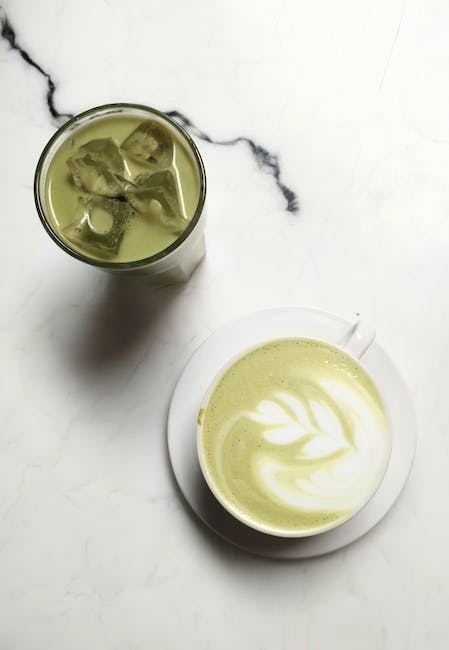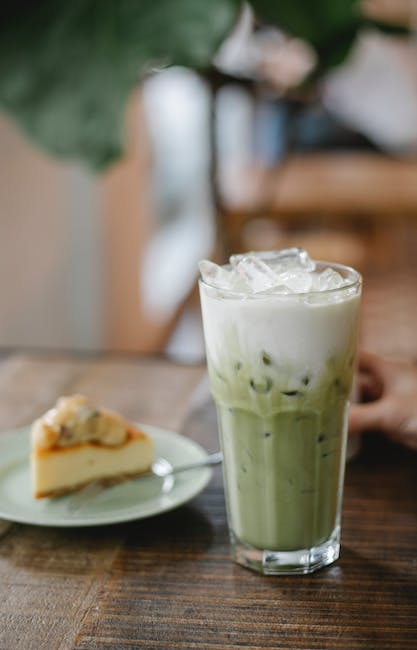Discovering the Art of Matcha Tea: The Importance of the Chasen
Matcha tea is not just any ordinary tea. It is a ceremonial tea that has been a part of Japanese culture for centuries. It is a tea that is prepared with the utmost care and attention to detail, and the chasen, or bamboo whisk, is an essential tool in achieving the perfect matcha tea.
What is a Chasen?
A chasen is a bamboo whisk that is used specifically for preparing matcha tea. It has a unique design with numerous fine and flexible tines that help to create a frothy and smooth consistency. The number of tines in a chasen can vary from 80 to 120, and the more tines it has, the more efficient it is in creating foam. It is made from a single piece of bamboo that is split into tines and then woven together at the base. It is a labor-intensive process that requires skilled craftsmen.
The Importance of the Chasen in the Japanese Tea Ceremony
The chasen is an essential part of the traditional Japanese tea ceremony, and it symbolizes the respect and attention to detail that goes into the tea-making process. The tea ceremony is not just about drinking tea, but it is a spiritual experience that involves mindfulness, respect, and harmony. The chasen is a tool that helps to achieve this harmony by creating the perfect matcha tea.
How to Use the Chasen
Using the chasen is not just about whisking the tea, but it is a process that involves several steps. To use the chasen, first, sift the matcha powder through a fine-mesh strainer into a bowl. Then add hot water and use the chasen to whisk the mixture in a quick back-and-forth motion until the tea becomes frothy and smooth. It is essential to use the chasen correctly to achieve the perfect matcha tea. Incorrect usage can result in a lumpy and uneven consistency or a lack of froth.
Caring for the Chasen
After use, the chasen should be rinsed with warm water and dried thoroughly to prevent mold growth. It should not be left in water or soaked as this can damage the tines and affect its performance. Proper care and maintenance of the chasen are essential to ensure its longevity and optimal performance.
Conclusion
In conclusion, the chasen is not just a bamboo whisk, but it is an essential tool that helps to achieve the perfect matcha tea. It is a symbol of the respect and attention to detail that goes into the traditional Japanese tea ceremony. Using the chasen correctly and caring for it properly are essential to ensure its longevity and optimal performance. So the next time you prepare a matcha tea, remember the importance of the chasen and the art of tea-making.
Discovering the Chashaku: The Essential Tool in the Japanese Tea Ceremony
Are you a fan of matcha tea? Have you ever wondered about the small bamboo scoop used to measure the powder? This is the chashaku, an essential tool in the traditional Japanese tea ceremony.
What is a Chashaku?
The chashaku is a small bamboo scoop used to measure the precise amount of matcha powder needed for the tea ceremony. The shape and size of the scoop can vary, but it typically has a curved tip and a thin handle.

Why is it Important?
The curvature of the tip allows the user to easily scoop the matcha powder from the container without spilling it, while the thin handle allows for precise measurement and easy transfer into the tea bowl. Accurately measuring the matcha powder is important for achieving the proper flavor and consistency of the tea.
How is it Used?
The chashaku is typically used to measure one scoop of matcha powder, which is equivalent to about 1 gram. It is then used to mix the matcha powder and water together in the tea bowl, creating a smooth and frothy tea.
Caring for your Chashaku
After use, the chashaku should be wiped clean with a damp cloth and stored in a cool, dry place to prevent warping or cracking. It is important to take care of your chashaku to ensure that it lasts for many tea ceremonies to come.
Conclusion
The chashaku is a small but important tool in the Japanese tea ceremony. It allows for precise measurement and easy transfer of matcha powder, resulting in a delicious and consistent cup of tea. So next time you enjoy a cup of matcha, take a moment to appreciate the craftsmanship and history behind the chashaku.
Discovering the Art of Chawan in the Japanese Tea Ceremony
Japan is renowned for its tea culture, and the tea ceremony is an important part of Japanese tradition. At the heart of this ceremony is the chawan, a traditional Japanese tea bowl used for preparing and drinking matcha tea. In this blog post, we explore the art of chawan and what makes it an integral part of the Japanese tea ceremony.
Types of Chawan
There are various types of chawan available, each with its own unique design and size. The style of the tea ceremony being performed can influence the design and size of the chawan. Some popular types of chawan include:
- Hira-chawan (flat bowl): This type of chawan is a flat, wide dish with a low profile, making it easy to whisk the matcha tea.
- Tsutsu-chawan (cylindrical bowl): The tsutsu-chawan is a long, cylindrical bowl that is taller than it is wide. This type of chawan is often used in tea ceremonies where the focus is on the tea itself.
- Kutsu-gata-chawan (shoe-shaped bowl): The kutsu-gata-chawan is a bowl shaped like a shoe. This type of chawan is often used in tea ceremonies where the focus is on the beauty of the tea utensils.
Materials and Design
Chawan can be made of ceramic, porcelain, or clay, and can be glazed or unglazed. The design of the chawan can vary from simple and rustic to ornate and decorative. The shape of the chawan can affect the taste of the matcha tea, as it can influence the way the tea is whisked and the aroma that is released. When choosing a chawan, it is important to consider the size, shape, and design that best suits your personal preferences and the type of tea ceremony you will be performing.
The Importance of Chawan
Chawan is considered an important element of the tea ceremony, as it is believed to embody the spirit of the tea and the essence of the ceremony itself. The chawan is often passed down from generation to generation and is considered a valuable family heirloom. The tea ceremony is a way of connecting with nature, achieving inner harmony, and experiencing a sense of inner peace. The chawan is an integral part of this experience, and its design and shape can influence the overall feeling of the ceremony.
The Art of Chawan
The art of chawan is not just about the physical object itself, but also about the process of making and using it. The chawan is created through a process of molding, firing, and glazing, and each step is carefully considered to create a beautiful and functional object. The act of holding and using the chawan during the tea ceremony is also an art form, as it requires a certain level of skill and concentration to whisk the matcha tea to the perfect consistency.
Conclusion
The chawan is an integral part of the Japanese tea ceremony and represents the essence of the ceremony itself. The design and shape of the chawan can influence the overall feeling of the ceremony and the experience of the tea drinker. Whether you prefer a simple and rustic chawan or an ornate and decorative one, the art of chawan is a fascinating and important aspect of Japanese culture.


Leave a Reply